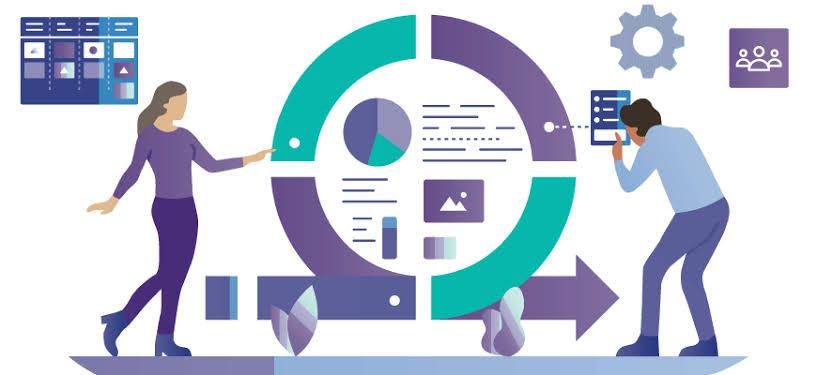Test automation has become an integral part of current app testing approaches. It is at the epicenter of Agile and DevOps practices and enables the QA to run continuous tests instead of verifying app features right before its release in the market. The continuous testing support allows the QA to eliminate the bugs and glitches early in the development cycle instead of stacking them for the end. Automation allows the testers to run various tests in parallel or sequence on multiple platforms, hence executing the time-taking tests in no time. Automation helps save time and costs and frees up the workforce to focus on developing the core elements of the app.
Automation is becoming more pervasive in-app testing cycle. Testers use it alongside manual testing to support code reusability, debug the app efficiently, and record various playback tests. With the appropriate test automation tool, testers can access real-time test reports, and re-run tests until it delivers positive results. Integrating suitable automation testing frameworks enables testers to onboard tools, approaches, and methods to perform test automation and align testing with business objectives.
With the advancement in technology, the trends in test automation are changing significantly. These recent shifts are enabling test automation practices to become more approachable, accessible, and valuable. The growth of AI/ML approaches in testing, cloud-based testing, continuous testing, and Agile methods are increasing test automation’s value and outcome. Here are a few key test automations that you need to keep track of.
Code-Less Test Automation
One of the most significant trends that are dominating test automation is the popularity of codeless testing. It helps to create automated tests without writing a single line of code. Code-less or scriptless testing enables the QA to achieve faster results and reduces the time to understand the code. It does not require knowledge of programming languages on behalf of the testers. Hence, codeless testing has a steep learning curve. The non-technical stakeholders in the app testing project can quickly review these test cases. The test case creation process is quick, and it enhances the efficiency of the automation process. It helps to save costs and resources in the app testing project.
Blend Of Continuous Testing
Continuous testing is becoming a buzzword in the field of automation testing. It involves executing automated tests as part of the app delivery pipeline and helps to obtain feedback on the business risks associated with the app as soon as possible. It focuses on business risk and provides insight into the release of an app. Thanks to Agile, DevOps, and continuous delivery, it helps to shorten the release cycles and quickly release the app in the market. The blend of test automation with continuous testing brings a wide range of benefits in the mobile app development lifecycle. It helps to test the app early and often and ensures robust bug fixation and validation of features. Continuous testing evolves and extends test automation features, enabling it to address the increased complexity and the rapid pace of modern app development and delivery.
API And Service Test Automation
As a part of integration testing, API automation helps in accelerating the testing speed and efficiency. API testing is one of the areas where automated testing is highly recommended, especially in DevOps, agile development, and continuous delivery cycles. API tests can cope with short release cycles and frequent changes without disrupting the test results. API or Application Programming Interface consists of the middle layer between the presentation (UI) and the database. It enables communication and data exchange between systems. API testing helps in validating the logic of the build architecture in a short span. API automated testing is necessary for ensuring app quality and CI/CD processes. Recent times are witnessing a rapid increase in API automated tests to ensure the accuracy of API/services and verify that all implemented functions are working as expected.
AI And ML
Artificial intelligence is impacting every field of technology. AI is bringing seismic shifts in test automation. The need for faster and more accurate product releases is pushing the adoption of AI in test automation. There are various use-cases of AI in test automation. It helps automate visual validation, automatically write test cases, improve testing reliability, and assist in API testing. Machine learning uses pattern recognition techniques. It leverages image-based testing to identify any UI glitches in the app which human testers may miss. It helps to validate the visual correction of the app. AI/ML uses spidering techniques to automatically crawl and collect valuable data like screenshots, HTML pages, and page loading time for training the ML model. This enables the ML model to learn about the app patterns. If there is an anomaly, it automatically highlights it, which the human testers can pick up for further assessments. With AI, one can improve testing reliability and enhance code dependency and maintainability. It also facilitates automation in API testing and can analyze traffic and identify patterns among API calls.
To Conclude:
These are a few of the most rapidly advancing trends in test automation. It helps improve the efficiency and value of test automation and brings the various app testing practices into the future.




















![TamilMV Proxy List Top 30+ [Unblock TamilMV Sites] TamilMV Proxy Unblock](https://technewsgather.com/wp-content/uploads/2023/04/17825836_SL-121019-25870-14-1-100x70.jpg)